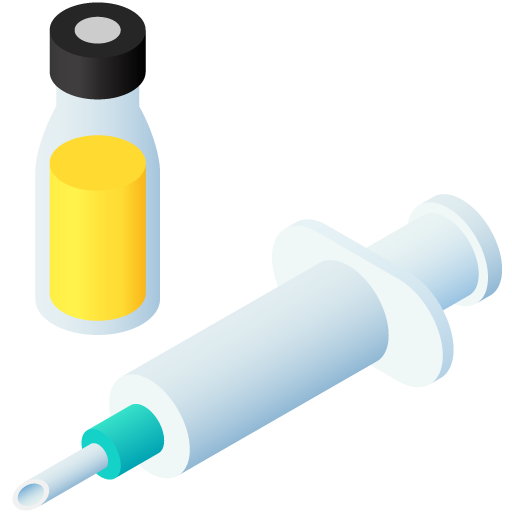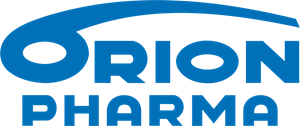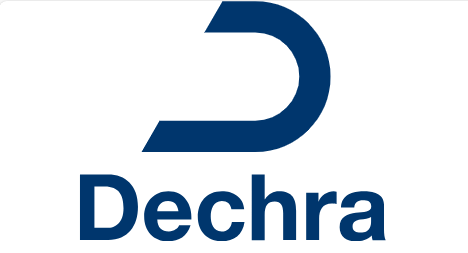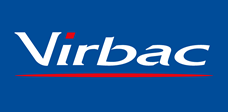Combination therapy
No results were found for your selected species
Rhiniseng
Active substance
ATC code
Species
Pigs (sows and gilts).
Indications
For the passive protection of piglets via colostrum after active immunisation of sows and gilts to reduce the clinical signs and lesions of progressive and non-progressive atrophic rhinitis, as well as to reduce weight loss associated with Bordetella bronchiseptica and Pasteurella multocida infections during the fattening period.
Challenge studies have demonstrated that passive immunity lasts until piglets are 6 weeks of age while in clinical field trials, the beneficial effects of vaccination (reduction in nasal lesion score and weight loss) are observed until slaughter.
Dose to be administered and administration route
Intramuscular use.
Allow the vaccine to reach room temperature (15 ˚C - 25 ˚C) before administration.
Shake well before use.
Administer one dose of 2 ml by intramuscular injection in the neck muscles according to the following schedule:
Basic vaccination: sows and gilts which have not been previously vaccinated with the product should be given two injections with an interval of 3-4 weeks. The first injection should be administered 6-8 weeks before the expected date of farrowing.
Revaccination: a single injection should be given 3-4 weeks prior to each subsequent farrowing.
Adverse reactions
Pigs (sows and gilts):
Common (1 to 10 animals / 100 animals treated): | Injection site swelling1 Elevated temperature2 |
Very rare (<1 animal / 10,000 animals treated, including isolated reports): | Anaphylactic-type reaction (severe allergic reaction)3 |
1After the administration of one dose of vaccine a swelling of less than 2 to 3 cm in diameter can occur at the injection site which may last up to five days and occasionally up to two weeks.
2An increase in body temperature of about 0.7 °C can occur during the first 6 hours after injection. An increase of rectal temperature up to 1.5º C may occur. This rectal temperature increase is spontaneously resolved within 24 hours without treatment.
3An appropriate symptomatic treatment should be administered without delay.
Reporting adverse events is important. It allows continuous safety monitoring of a veterinary medicinal product. Reports should be sent, preferably via a veterinarian, to either the marketing authorisation holder or its local representative or the national competent authority via the national reporting system. See the package leaflet for respective contact details.
Dispensing
POM-V - Prescription Only Medicine – VeterinarianReferences
1. NAME OF THE VETERINARY MEDICINAL PRODUCT
RHINISENG suspension for injection for pigs
2. QUALITATIVE AND QUANTITATIVE COMPOSITION
Each dose of 2 ml contains:
Active substances:
|
Inactivated Bordetella bronchiseptica, strain 833CER: |
9.8 BbCC(*) |
|
Recombinant Type D Pasteurella multocida toxin (PMTr): |
≥ 1 MED63(**) |
(*) Bordetella bronchiseptica Cell Count in log10.
(**) Murine Effective Dose 63: vaccination of mice with 0.2 ml of a 5-fold diluted vaccine by subcutaneous route induces seroconversion in at least 63% of the animals.
Adjuvants:
Aluminium hydroxide gel 6.4 mg (aluminium)
DEAE-Dextran
Ginseng
Excipients:
|
Qualitative composition of excipients and other constituents |
Quantitative composition if that information is essential for proper administration of the veterinary medicinal product |
|
Formaldehyde |
0.8 mg |
|
Simethicone |
|
|
Disodium phosphate dodecahydrate |
|
|
Potassium dihydrogen phosphate |
|
|
Sodium chloride |
|
|
Potassium chloride |
|
|
Water for injections |
|
White homogeneous suspension.
3. CLINICAL INFORMATION
3.1 Target species
Pigs (sows and gilts).
3.2 Indications for use for each target species
For the passive protection of piglets via colostrum after active immunisation of sows and gilts to reduce the clinical signs and lesions of progressive and non-progressive atrophic rhinitis, as well as to reduce weight loss associated with Bordetella bronchiseptica and Pasteurella multocida infections during the fattening period.
Challenge studies have demonstrated that passive immunity lasts until piglets are 6 weeks of age while in clinical field trials, the beneficial effects of vaccination (reduction in nasal lesion score and weight loss) are observed until slaughter.
3.3 Contraindications
Do not use in case of hypersensitivity to the active substances, to the adjuvants or to any of the excipients.
3.4 Special warnings
Vaccinate healthy animals only.
3.5 Special precautions for use
Special precautions for safe use in the target species:
Not applicable.
Special precautions to be taken by the person administering the veterinary medicinal product to animals:
In case of accidental self-injection only a minor injection site reaction is expected.
Special precautions for the protection of the environment:
Not applicable.
3.6 Adverse events
Pigs (sows and gilts):
|
Common (1 to 10 animals / 100 animals treated): |
Injection site swelling1 Elevated temperature2 |
|
Very rare (<1 animal / 10,000 animals treated, including isolated reports): |
Anaphylactic-type reaction (severe allergic reaction)3 |
1After the administration of one dose of vaccine a swelling of less than 2 to 3 cm in diameter can occur at the injection site which may last up to five days and occasionally up to two weeks.
2An increase in body temperature of about 0.7 °C can occur during the first 6 hours after injection. An increase of rectal temperature up to 1.5º C may occur. This rectal temperature increase is spontaneously resolved within 24 hours without treatment.
3An appropriate symptomatic treatment should be administered without delay.
Reporting adverse events is important. It allows continuous safety monitoring of a veterinary medicinal product. Reports should be sent, preferably via a veterinarian, to either the marketing authorisation holder or its local representative or the national competent authority via the national reporting system. See the package leaflet for respective contact details.
3.7 Use during pregnancy, lactation or lay
Pregnancy:
Can be used during pregnancy.
3.8 Interaction with other medicinal products and other forms of interaction
No information is available on the safety and efficacy of this vaccine when used with any other veterinary medicinal product. A decision to use this vaccine before or after any other veterinary medicinal product therefore needs to be made on a case by case basis.
3.9 Administration routes and dosage
Intramuscular use.
Allow the vaccine to reach room temperature (15 ˚C - 25 ˚C) before administration.
Shake well before use.
Administer one dose of 2 ml by intramuscular injection in the neck muscles according to the following schedule:
Basic vaccination: sows and gilts which have not been previously vaccinated with the product should be given two injections with an interval of 3-4 weeks. The first injection should be administered 6-8 weeks before the expected date of farrowing.
Revaccination: a single injection should be given 3-4 weeks prior to each subsequent farrowing.
3.10 Symptoms of overdose (and where applicable, emergency procedures and antidotes)
No adverse reactions other than already mentioned under point 3.6 can be expected, except for an increase of rectal temperature up to 2 ºC. This rectal temperature increase is spontaneously resolved within 24 hours without treatment.
Discoloration of muscular fibres of the inoculation site (0.5 cm wide x 2 cm long) may be observed at necropsy in 10% of animals. This discoloration is attributable to aluminium hydroxide and may be observed up to seven weeks after the injection of a double dose of vaccine.
3.11 Special restrictions for use and special conditions for use, including restrictions on the use of antimicrobial and antiparasitic veterinary medicinal products in order to limit the risk of development of resistance
Not applicable.
3.12 Withdrawal periods
Zero days.
4. IMMUNOLOGICAL INFORMATION
4.1 ATCvet code: QI09AB04
To stimulate active immunity in order to provide passive immunity to the progeny against atrophic rhinitis associated with Bordetella bronchiseptica and Pasteurella multocida infections.
5. PHARMACEUTICAL PARTICULARS
5.1 Major incompatibilities
Do not mix with any other veterinary medicinal product.
5.2 Shelf life
Shelf life of the veterinary medicinal product as packaged for sale: 2 years.
Shelf life after first opening the immediate packaging: 10 hours stored at room temperature.
5.3 Special precautions for storage
Store and transport refrigerated (2 °C - 8 °C).
Protect from light.
Do not freeze.
5.4 Nature and composition of immediate packaging
Type I colourless glass vials of 20 ml.
Type II colourless glass vials of 50 ml and 100 ml .
The vials are closed with a rubber stopper and aluminium cap.
20 ml, 50 ml, 100 ml and 250 ml polyethylene (PET) bottles closed with a rubber stopper and aluminium cap.
Pack sizes:
- Cardboard box with 1 or 10 glass vials of 10 doses.
- Cardboard box with 1 glass vial of 25 doses.
- Cardboard box with 1 glass vial of 50 doses.
- Cardboard box with 1 or 10 PET bottles of 10 doses.
- Cardboard box with 1 PET bottle of 25 doses.
- Cardboard box with 1 PET bottle of 50 doses.
- Cardboard box with 1 PET bottle of 125 doses.
Not all pack sizes may be marketed.
5.5 Special precautions for the disposal of unused veterinary medicinal products or waste materials derived from the use of such products
Medicines should not be disposed of via wastewater or household waste.
Use take-back schemes for the disposal of any unused veterinary medicinal product or waste materials derived thereof in accordance with local requirements and with any national collection systems applicable to the veterinary medicinal product concerned.
6. NAME OF THE MARKETING AUTHORISATION HOLDER
LABORATORIOS HIPRA, S.A.
7. MARKETING AUTHORISATION NUMBER(S)
EU/2/10/109/001-009
8. DATE OF FIRST AUTHORISATION
Date of first authorisation: 16/09/2010
9. DATE OF THE LAST REVISION OF THE SUMMARY OF THE PRODUCT CHARACTERISTICS
{DD/MM/YYYY}
10. CLASSIFICATION OF VETERINARY MEDICINAL PRODUCTS
Veterinary medicinal product subject to prescription.
Detailed information on this veterinary medicinal product is available in the Union Product Database (https://medicines.health.europa.eu/veterinary).
 TRUSTED SOURCE
TRUSTED SOURCE









